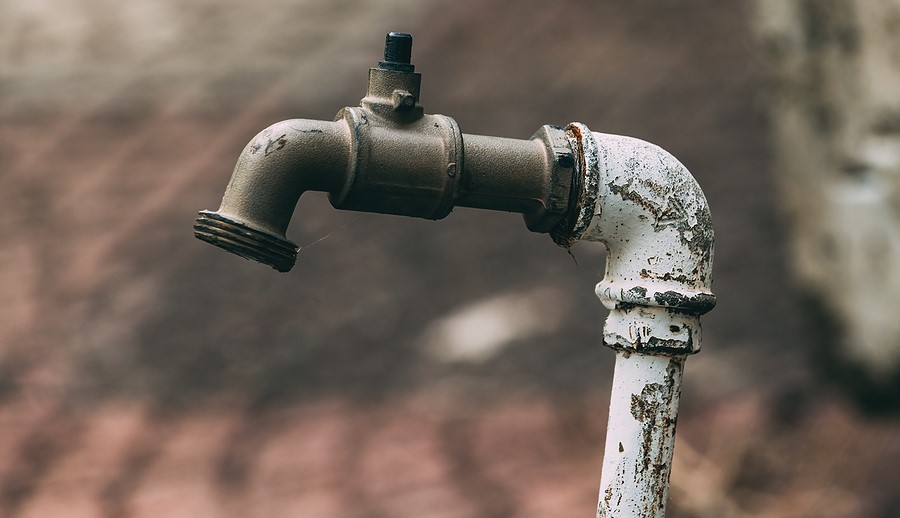News
UK Water Shortages Off To An Early Start
The summer has really only just begun and much of the UK has experienced some seriously hot weather already, with temperatures for June climbing as high as 30 degrees C in some parts of the country amid a mini-heatwave that has seen water shortages already prove problematic for many… a sign of what is to come for July and August, no doubt.
Last year, 11 out of 14 areas around England were classified as being in drought status by the end of August – and, in fact, two regions have never fully recovered from the summer of 2022, with East Anglia and Devon, Cornwall and the Isles of Scilly still in drought status in February of this year.
The hot, dry conditions we’ve already experienced so far this summer (and so early on) will only put additional pressure on already stretched water resources… and this will see many taps start to run dry over the next few weeks.
In East Sussex, for example, four schools had to close their doors this month because of water shortages, according to the Guardian, which reported on June 15th that these closures came amid acute water shortages, despite the fact that significantly above-average rainfall was seen in East Sussex and Kent in April.
This was then followed up by a much drier May, with rainfall 45 per cent below average in both regions. Some local communities criticised local supplier South East Water for failing to invest in infrastructure, with water leaks being seen in villages that have led to little to no water supply.
The water company, however, put the water shortages down to very high demand for resources across Kent and Sussex, with incident manager Steve Andrews quoted by the news source as saying: “Yesterday (June 14th), we produced 654 megalitres of tap water, when the usual figure is 540.”
“All our water treatment works and water sources available to us are being used, but with the demand still so high, our treated water storage reservoirs are not refilling enough to keep all our customers in supply. This means up to 2,500 customers, mainly in the Wadhurst area, may be without water or have low pressure,” he went on to say.
South East Water has also said that it is now working closely with schools to provide them with alternative water sources, as well as setting up bottled water stations and encouraging those with tap water supplies to only use it for cooking, hydration and hygiene, and not for sprinklers and hosepipes.
In fact, a hosepipe ban has just been implemented by the water supplier for Kent and Sussex, which means that water cannot be used for gardens, to fill swimming pools or to clean cars. Anyone caught flouting the rules after June 26th could face a fine of £1,000.
Scotland’s woes
North of the border in Scotland, meanwhile, the Scottish Environmental Protection Agency (SEPA) warned on June 16th that a third of the country will likely be at Significant water scarcity levels by the end of the month if no recovery in river levels is seen.
The hot, dry weather seen in recent weeks is expected to continue well into late June and early July, with any periods of intense rainfall unlikely to drive sufficient water level recovery, particularly after what was a drier-than-average winter for most of the country and an especially dry May, with just 44 per cent of the long-term average rainfall seen.
Nathan Critchlow-Watton, head of water and planning at SEPA, said: “Scotland’s climate is changing, and we urgently need to adapt. Severe water scarcity has significant impacts on our environment, our economy and society. Our rivers and lochs are under immense stress and it’s clear further action will be needed to protect them.
“Last year, we warned that a decrease in summer rainfall may exert pressure on areas that have not experienced water scarcity before, and that’s now happening. It is vitally important that Scotland is prepared to deal with water scarcity both now and in the future and people work together to plan for and manage water scarcity events.”
The recent thunderstorms that affected the UK over the last week or so have done little to ease the situation, according to the organisation. Although some localised recovery of rivers and groundwater has been seen, it has not been sufficient to replenish levels, with water scarcity conditions continuing to grow.
What can businesses do?
Businesses are in the unique position of being able to make significant water savings across their sites, far more so than residential water users would ever be able to achieve.
Gaining a deeper understanding of how and where your company uses water is the first step towards improving your water footprint and becoming more sustainable across the board.
When it comes to actually reducing your water usage and consumption, prioritising water leak detection and repair can help you make immediate water savings… with the added benefit of saving you money at the same time.
Leaks often go unnoticed because they take place below ground where they’re difficult to spot or because they’re nothing but a tiny trickle that, over time, causes a huge amount of water to be wasted.
By monitoring your bills and tracking your water flow, you’ll be able to see any spikes in usage, which could indicate a leak. From there, you can take action immediately and repair any leaks, preventing water from being wasted and preventing you from spending money unnecessarily.
If you’d like to find out more about how to become more water efficient as a business, get in touch with the H2o Building Services team today to see how we can help you improve your eco-friendly credentials.
